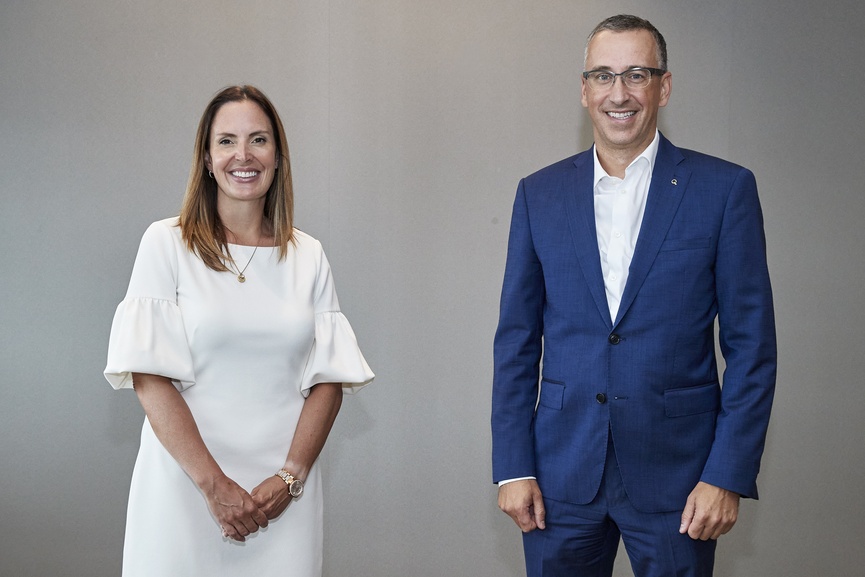Montreal, July 14, 2021
Press Release
Hydro-Québec and Énergir: An unprecedented partnership to reduce greenhouse gas emissions
Hydro-Québec and Énergir are proud to announce a unique, one-of-a-kind partnership that will help reduce natural gas consumption among participating customers by slightly more than 70%, thereby reducing greenhouse gas (GHG) emissions associated with heating the residential, commercial and institutional buildings involved.

The increased electrification of buildings with dual energy will offset 540,000 tonnes of CO2 equivalent by 2030, at the lowest possible cost to society. The partnership will therefore help Québec reach its objective of reducing GHG emissions by 37.5% by 2030 compared with 1990 levels.
Heating buildings with electricity puts significant pressure on Hydro-Québec’s system during winter peak periods. Dual energy is an excellent way of maximizing the use of electricity in the heating of buildings while limiting the impact on peak periods.
In concrete terms, replacing heating systems fuelled solely by natural gas with dual-energy systems will mean buildings can be heated with electricity most of the time, with natural gas being used only in very cold weather.
The Québec government actively participated in developing the solution and indicated its support by issuing an Order in Council identifying the economic, social and environmental concerns and in which it underscored the project’s importance in reaching the targets outlined in the 2030 Plan for a Green Economy (2030 PGE). A budget of $125 million is set out in the 2030 PGE’s Implementation Plan 2021-2026 to fund initiatives designed to achieve an optimal complementarity of the electricity and gas networks. The two energy providers will soon submit a file in this regard to the Régie de l’énergie for approval.
Quotes:
“One of our main collective challenges is to reduce greenhouse gas emissions at the lowest possible cost. This dual-energy partnership is an ideal way of taking on this challenge. Through smart building electrification, the new dual-energy solution marks an important step toward reaching GHG reduction targets in this sector.”
Éric Filion, Executive Vice President – Distribution, Procurement and Shared Services, Hydro-Québec.
“This partnership with Hydro-Québec perfectly symbolizes the concept of the right energy in the right place, at the right time and at the best possible price. The complementarity with electricity reflects Énergir’s new vision, Focus on 2030, which allows us to be a key player in dealing with economic, social and climate-related issues for our customers and Québec and to increase our contribution to Québec’s GHG reduction efforts.”
Stéphanie Trudeau Executive Vice President – Québec, Énergir
Key points:
- The Québec government’s 2030 Plan for a Green Economy (2030 PGE or PGE) set a GHG reduction target of 37.5% by 2030 compared with 1990.
- Québec is fortunate in that it can count on renewable electricity—low-cost hydropower. Greater electrification will mean greenhouse gas reduction targets set out in the PGE can be reached.
- However, completely electrifying the economy comes with certain challenges in terms of cost and time and is a major issue during winter peaks.
- Dual energy will help Québec society avoid significant costs. By 2030, it will result in savings of $1.5 billion compared with fully electrifying those markets currently fuelled by natural gas. That amount would have led to a rate increase for the customers of both energy providers.
- In Québec, peak periods occur in the winter months when a lot of customers are using heating systems or energy-intensive appliances at the same time. It is therefore important to manage electricity use intelligently at those times in order to reduce peaks.
- Hydro-Québec and Énergir are announcing a new partnership to reduce GHG emissions associated with heating some residential, commercial and institutional buildings through a new dual-energy solution combining electricity and natural gas.
- Dual energy is an energy consumption program already offered to Hydro-Québec customers. It consists of using electricity as the main source of energy—about 70% of the time—and a fuel as the auxiliary source during peak periods when electricity is more expensive.
- This unprecedented collaboration between two large energy providers will offset 540,000 tonnes of CO2 equivalent by 2030.
Related links:
- Link to video (in French only)
Sources and information:
https://www.energir.com/en/about/the-company/who-we-are/our-engagement/
Hydro-Québec
Media Relations
Tel.: 514 289-5005
Énergir
Media Relations
Tél : 514 598-3449